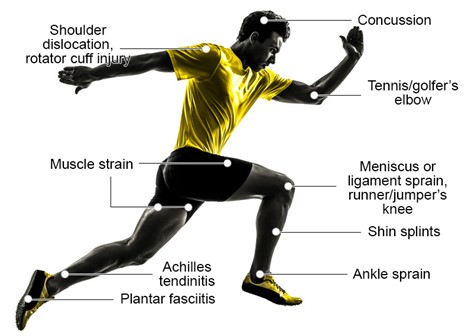Sports injuries are common occurrences among athletes of all levels, ranging from amateurs to professionals. These injuries can vary widely in severity and type, affecting different parts of the body such as muscles, tendons, ligaments, bones, and joints. Physical therapy plays a crucial role in the rehabilitation process following a sports injury, aiming to restore function, reduce pain, and prevent recurrence. In this page, we will explore the importance of physical therapy in treating sports injuries and the techniques commonly employed by physical therapists.
Role of Physical Therapy:
Physical therapy is essential in the management of sports injuries due to its comprehensive approach to rehabilitation. It involves a tailored program designed to address the specific needs of the injured individual, taking into account factors such as the type and severity of the injury, the athlete’s goals, and their level of fitness. The primary goals of physical therapy for sports injuries include:
- Pain Reduction: Physical therapists employ various modalities such as ice, heat, ultrasound, and electrical stimulation to alleviate pain and inflammation associated with sports injuries. The most effective tool a PT has however is manual techniques such as soft tissue mobilization, neuromuscular facilitation, and joint mobilization which are used to reduce pain and improve tissue flexibility.
- Restoration of Function: Through targeted exercises and activities, physical therapists work to restore range of motion, strength, flexibility, and proprioception in the injured area. These exercises are progressively tailored to challenge the athlete’s abilities and promote tissue healing.
- Prevention of Secondary Complications: Physical therapy aims to prevent secondary complications such as muscle weakness, joint stiffness, and scar tissue formation that may arise during the recovery process. By addressing these issues early on, physical therapists help minimize the risk of long-term disability and facilitate a faster return to sport.
- Education and Injury Prevention: Athletes are educated on proper body mechanics, training techniques, and injury prevention strategies to reduce the likelihood of future injuries. This may involve biomechanical analysis, ergonomic assessments, and personalized training programs tailored to the athlete’s specific sport and performance goals.
Common Techniques Used in Physical Therapy:
Physical therapists employ a variety of techniques and modalities to facilitate the rehabilitation of sports injuries. Some of the most common include:
- Therapeutic Exercises: These may include stretching, strengthening, balance, and proprioceptive exercises targeted at improving muscle strength, flexibility, and coordination in the injured area.
- Manual Therapy: Hands-on techniques such as massage, joint mobilization, and soft tissue manipulation are used to improve tissue flexibility, reduce pain, and restore joint mobility.
- Modalities: Modalities such as ice, heat, ultrasound, electrical stimulation, and laser therapy may be used to manage pain, reduce inflammation, and promote tissue healing.
- Functional Training: Functional exercises that mimic sport-specific movements are incorporated to help athletes regain functional abilities and prepare for a safe return to sport.
- Bracing and Taping: Orthotic devices, braces, and taping techniques may be utilized to provide support, stability, and protection to the injured area during the rehabilitation process.
Let Our Experienced Physical Therapists Help With Your Sports Rehab
Physical therapy plays a vital role in the rehabilitation of sports injuries, offering a holistic approach to recovery that addresses pain management, functional restoration, and injury prevention. By tailoring rehabilitation programs to the specific needs of each athlete and employing a combination of therapeutic techniques, physical therapists help athletes achieve optimal recovery and return to sport safely and effectively. However, it’s essential for athletes to adhere to their prescribed rehabilitation program and follow proper injury prevention strategies to minimize the risk of recurrence and maximize their long-term athletic performance.
Schedule your Sport Injury Treatment session today.

